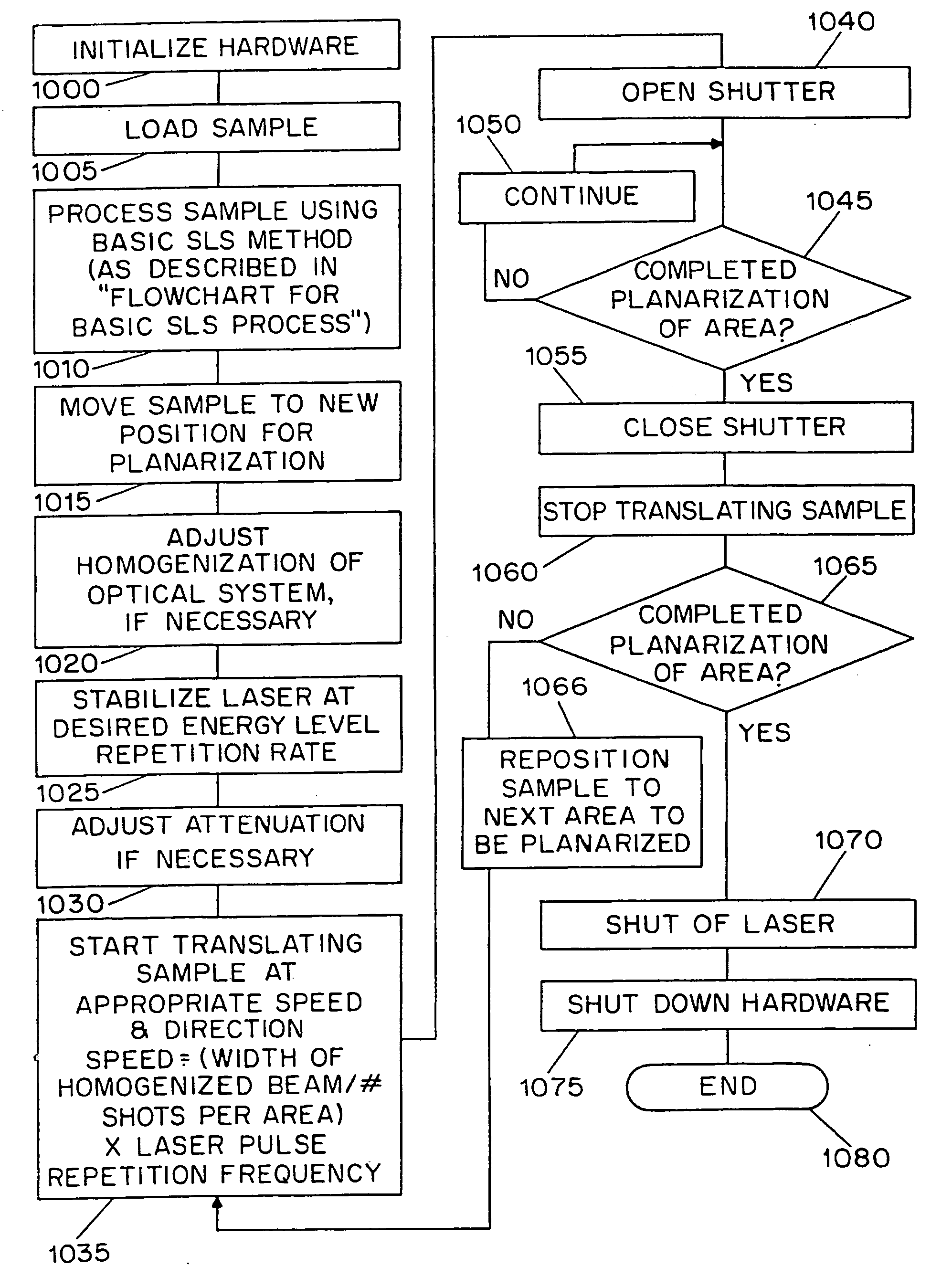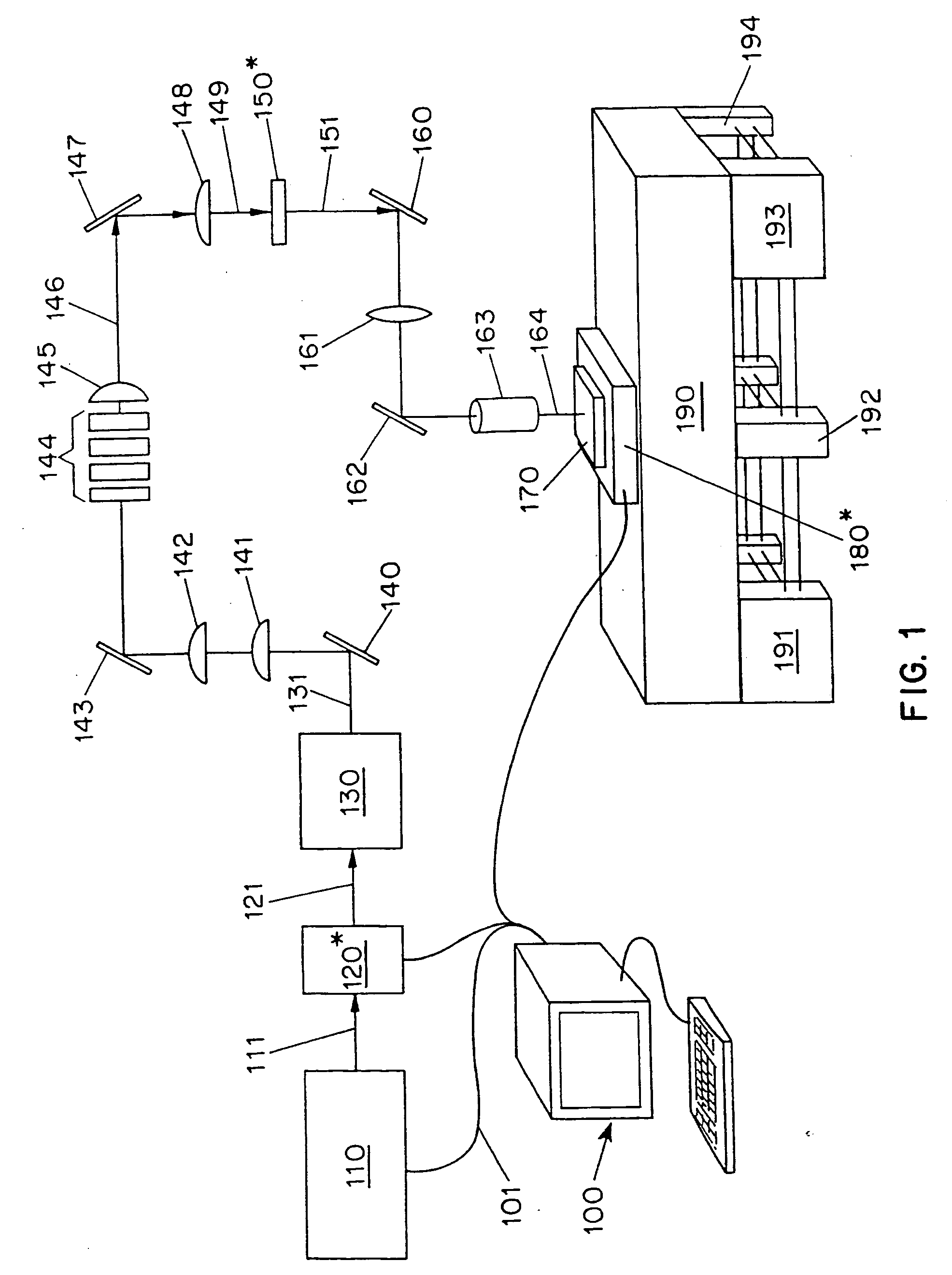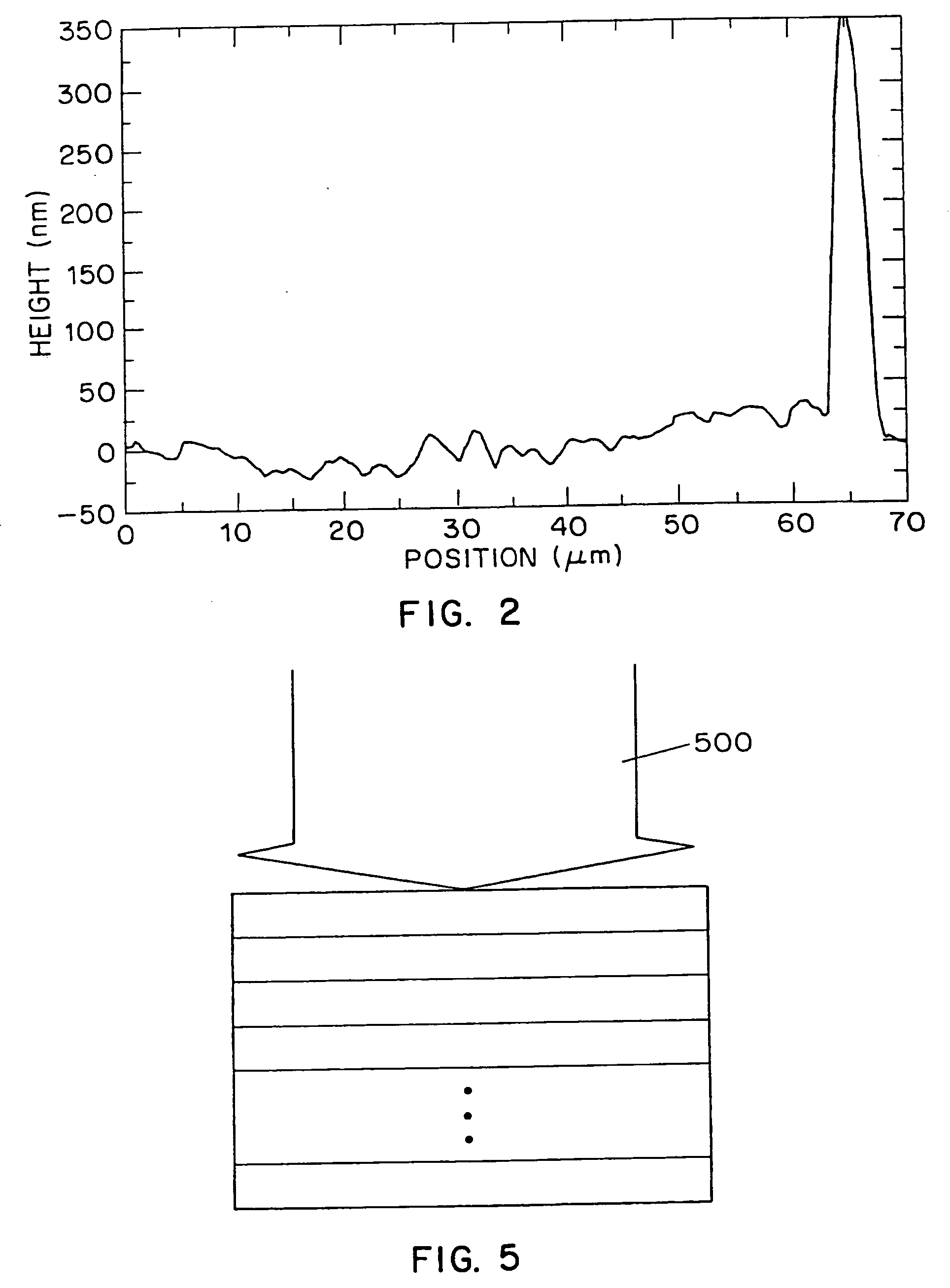Surface planarization of thin silicon films during and after processing by the sequential lateral solidification method
a technology of surface planarization and thin silicon, applied in the direction of laser beam welding apparatus, metal working apparatus, manufacturing tools, etc., can solve the problems of low manufacturing yield, non-uniform devices, and difficulty in achieving uniform devices, so as to reduce surface roughness and reduce surface roughness
- Summary
- Abstract
- Description
- Claims
- Application Information
AI Technical Summary
Benefits of technology
Problems solved by technology
Method used
Image
Examples
first embodiment
[0033] Referring to FIGS. 3 and 4, the present invention will now be described. FIG. 3 illustrates a post processing system embodiment for planarizing polycrystalline and single crystal thin film semiconductors produced by the sequential lateral solidification process. The system includes an excimer laser 310, beam attenuator and shutter 320, reflecting plate 330, telescoping lenses 331, 332, reflecting plate 333, beam homogenizer 340, condensing lens 345, reflecting plate 347, field lense 350, sample 360, sample translation stage 370, optical table 380, and managing computer 300. A preferred laser 310, attenuator 320, telescoping lenses 332, 332, homogenizer 340, and sample translation stage 370 that is movable in two orthogonal directions are each described in the co-pending patent application Ser. No. 09 / 390,537. The table 380 may be as described in that patent document, or may be an ordinary table. It is preferable that the homogenized beam 346 be shaped with a tophat profile in...
second embodiment
[0042] Referring next to FIG. 8, the present invention will now be described. In this embodiment, the surface of silicon thin film is kept planarized through the employment of a rigid cap layer during the sequential lateral solidification process. Thus, FIG. 8 shows a thin silicon sample formed of an approximately 50-200 nm thick amorphous silicon layer 810 deposited on a silicon oxide base layer 820. The sample is capped with a thick second silicon oxide layer 820, approximately 2 microns thick, which is substantially rigid. The cap layer must be sufficiently thick to withstand the contractions and expansions during melting and resolidification of the silicon layer during the sequential lateral solidification process.
[0043] The sample with cap layer 830 are then used in place of sample 170 in the lateral solidification process, a complete description of which is contained in the above mentioned patent application Ser. No. 09 / 390,537. After such processing, the cap layer 830 is remo...
PUM
| Property | Measurement | Unit |
|---|---|---|
| thick | aaaaa | aaaaa |
| width | aaaaa | aaaaa |
| width | aaaaa | aaaaa |
Abstract
Description
Claims
Application Information
 Login to View More
Login to View More - R&D
- Intellectual Property
- Life Sciences
- Materials
- Tech Scout
- Unparalleled Data Quality
- Higher Quality Content
- 60% Fewer Hallucinations
Browse by: Latest US Patents, China's latest patents, Technical Efficacy Thesaurus, Application Domain, Technology Topic, Popular Technical Reports.
© 2025 PatSnap. All rights reserved.Legal|Privacy policy|Modern Slavery Act Transparency Statement|Sitemap|About US| Contact US: help@patsnap.com



